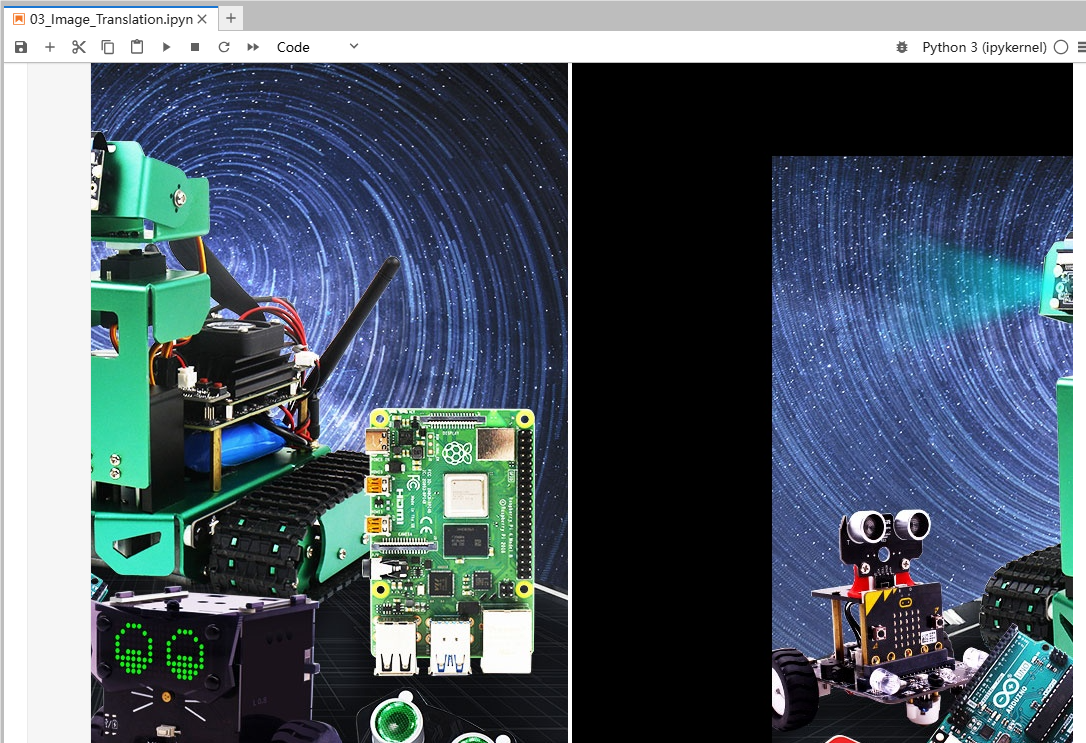3. Image translation
3.1. Image translation
cv2.warpAffine(src, M, dsize[,dst[, flags[, borderMode[, borderValue]]]])
Parameter meaning:
src - input image. M - transformation matrix. dsize - size of output image. flags - combination of interpolation methods (int type!) borderMode - border pixel mode (int type!) borderValue - (important!) border fill value; by default, it is 0.
Among the above parameters: M is an affine transformation matrix, which generally reflects the relationship of translation or rotation and is a 2×3 transformation matrix of InputArray type. In daily affine transformation, only the first three parameters are set, such as cv2.warpAffine(img,M,(rows,cols)) to achieve basic affine transformation effects.
How to get the transformation matrix M? The following example illustrates that:
The original image src is converted to the target image dst through the conversion matrix M:
dst(x, y) = src(M11x + M12y+M13, M21x+M22y+M23)
The original image src is moved 200 pixels to the right and 100 pixels downward, and the corresponding relationship is:
dst(x, y) = src(x+200, y+100)
Complete the above expression, that is:
dst(x, y) = src(1·x + 0·y + 200, 0·x + 1·y + 100)
According to the above expression, the values of each element in the corresponding transformation matrix M can be determined as follows:
M11=1
M12=0
M13=200
M21=0
M22=1
M23=100
Substituting the above values into the transformation matrix M, we get:

3.2. Actual effect display
Code path:
/home/pi/Rider-pi_class/4.Open Source CV/B.Geometric_Transformations/03_Image_Translation.ipynb
import cv2import numpy as npimg = cv2.imread('yahboom.jpg',1)#cv2.imshow('src',img)imgInfo = img.shapeheight = imgInfo[0]width = imgInfo[1]####matShift = np.float32([[1,0,200],[0,1,100]])# 2*3dst = cv2.warpAffine(img,matShift,(height,width))#1 data 2 mat 3 info# 移位 矩阵 Shift Matrix# cv2.imshow('dst',dst)# cv2.waitKey(0)x#bgr8转jpeg格式 bgr8 to jpeg formatimport enumimport cv2def bgr8_to_jpeg(value, quality=75): return bytes(cv2.imencode('.jpg', value)[1])xxxxxxxxxximport ipywidgets.widgets as widgetsimage_widget1 = widgets.Image(format='jpg', )image_widget2 = widgets.Image(format='jpg', )# create a horizontal box container to place the image widget next to eachotherimage_container = widgets.HBox([image_widget1, image_widget2])# display the container in this cell's outputdisplay(image_container)#display(image_widget2)img1 = cv2.imread('yahboom.jpg',1)image_widget1.value = bgr8_to_jpeg(img1)image_widget2.value = bgr8_to_jpeg(dst)